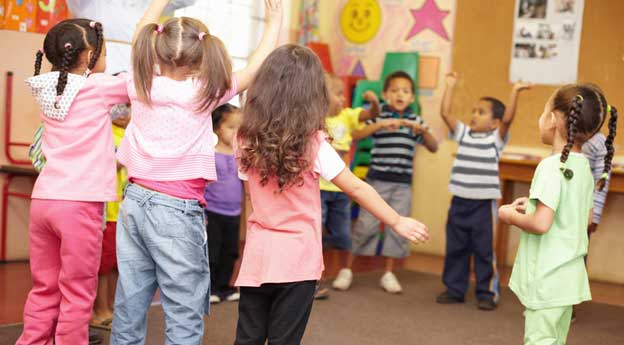Kids need to be active, and that’s a fact. It can be very frustrating for students of all ages to sit in a desk all day, class after class. Without the opportunity to move, students become fidgety and struggle to pay attention to the lesson being given. Research as shown that due to the stimulated blood flow that occurs with movement, physical activity is great for the brain, and therefore promotes learning, increases memory, improves attention, and even helps with decision making. With fewer and fewer schools providing PE classes for students, incorporating movement daily in all classrooms of all contents is now more critical than ever. Getting students up and moving is a surefire way to keep kids healthy and keep them engaged in their learning.
Brain Breaks
Students can only handle so much information at a time before they need a break. Allowing students to move during these breaks is a great way to get their blood pumping and provide a little exercise. Go Noodle creates movement and mindfulness videos that can be used as brain breaks to get kids up and moving. Any opportunity for movement during these breaks, however, is beneficial to students.
Implementing Movement Activities within Your Lesson
Movement doesn’t have to be reserved just for breaks. You can integrate it throughout your lessons. For example, Angelina Murphy of Edutopia suggests the following four activities: Four Corner Discussions, Musical Discussions, Gallery Walks, and Silent Discussion Boards.
Four Corner Discussions and Musical Discussions
In a four corner discussion, the teacher designates the four corners of the classroom as four different, generic answers to a potential question such as agree, strongly agree, disagree, and strongly disagree. Then the teacher poses a question or statement for students to contemplate and then answer. Students then go to the corner they align with and discuss it with the other students in that corner. To take it a step further, students can pair up with someone in an opposite corner and take turns discussing why they chose their corner.
A musical discussion is similar to a four corner discussion, except rather than having corners, students walk around until the music stops. Once it stops, they walk up to the person nearest them and discuss the teacher’s topic. This is a great way to spice up finding different partners for Think/Pair/Share.
Gallery Walks and Silent Discussion Boards
A gallery walk allows students to get up and walk around the room to look at different items displayed around the room. This could be political cartoons, poems, articles, or many other items. The students walk around and discuss the items with the people around them. Another option is to have students first walk around on their own silently, recording their thoughts on sticky notes and placing those sticky notes on the displayed items. Once students have had a chance to reflect on their own, they then discuss their thoughts with a partner or group.
Silent discussion boards are similar to gallery walks, but rather than discussing items with people, they respond to a written question on a sheet of paper. You can have as many questions posted around the room as you want. Students are still working on your original activity. However, instead of completing it sitting at their desks, students can now stand up and move around the room.
Other Movement in Class
Integrating movement into lessons doesn’t have to be a special event. It can be done in small ways such as having students get up to get supplies and put them away, passing out papers, collecting papers, doing movements while repeating vocabulary words, or doing a jumping jack when they know the answer to a question.
Think/Pair/Shares are another great way to have students get up out of their seats while also reinforcing the content of the lesson. Have students stand up and find a partner on the other side of the room or use fun criteria like someone wearing the same color as you or someone with the same birthday month. Once students find a partner, have them remain standing while they discuss the posed question. Ultimately, getting students moving in any way possible will help their health and reinforce their learning.
For more great resources and ideas on enhancing the education experience for you and your students, make sure you check out Credits for Teachers. In addition to helpful tips and information, you can also enroll in Professional Development courses that are entirely online and self-paced. Completion of these courses can provide you with graduate credits from a Credit for Teachers’ university partner. These credits are valuable, as you can utilize them for salary advancements and recertification.




